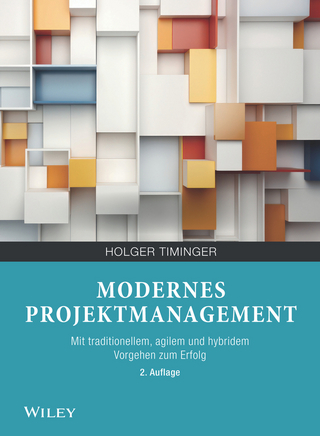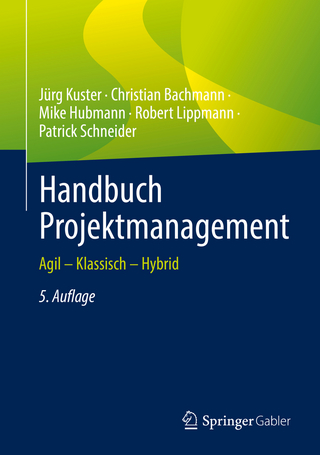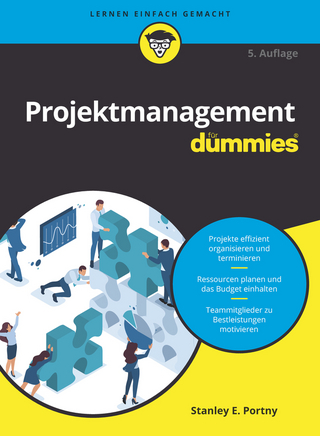
FAST Creativity & Innovation
J Ross Publishing (Verlag)
978-1-932159-66-0 (ISBN)
FAST Creativity & Innovation is a landmark work authored by the creator of the method called Function Analysis Systems Technique (FAST) and pioneer of value engineering and value analysis. FAST is a powerful mapping technique that can graphically model goals, objectives, strategies, plans, systems, projects, products, processes, and procedures in function terms to identify function dependencies by organizing them into a cause and effect relationship. This technique quickly brings clarity to whatever situation or problem it is applied and greatly enhances productive thinking, creativity, innovation, and complex problem solving.
Some of the basic concepts of FAST have been used for several decades in value engineering, which focuses on decreasing costs, improving quality and increasing value and profits. Derivatives of this original method such as fishbone diagrams, theory of constraints and process mapping came into use in fields such as quality management, new product development, manufacturing, and supply chain and project management. However, despite these developments, many of the original FAST concepts were either overlooked or misunderstood as greater opportunities for success remained untapped. FAST Creativity & Innovation groups all the original concepts together in great detail so you can learn them using easily understood step-by-step examples developed by the creator of this method.
The creator and author, Charles Bytheway, presents a procedure that standardizes the method for creating FAST diagrams and function trees for rapidly improving processes, innovation, new product development and value engineering, and for effectively solving a wide variety of complex problems quickly. After reading this book you will have gained not only the basic skills of using this method, but the original insight of its developer for mastering its use in any environment. This guide is an outstanding tool for use in industry, a variety of college courses and for value engineers.
Charles Bytheway was the first recipient of the Lawrence D. Miles Award from the Society of American Value Engineers for his development of FAST diagramming.
Chapter 1: Introduction Utilizing one's ImaginationQuestions to AskWhy-How LogicFast & TestimonialsA Communication ToolBasic ConceptsChapter 2: Sparked by FunctionValue AnalysisNaming FunctionsLooking at FunctionsFunctions Changed My LifeSomething Must Be Acted UponFunctions Not Limited to ProductsDecisions - A Form of CreativitySupporting FunctionsChapter 3: Discovering FunctionsDiscovering Basic FunctionsDiscovering How I Was ThinkingAnswers Expressed as FunctionsWhy-How LogicConcept of FAST DiagrammingFAST TestimonialsChapter 4: Why-How LogicNaming FunctionsWhy-How LogicConvert Answers to FunctionsStart With a Simple FunctionVerifying Your AnswerUsing Your CreativityUsing Why LogicVerification QuestionTestimonials of Function LinksLogic Diagrams and FAST TreesLooking for Creative OpportunitiesApplying Why-How Logic to New FunctionsSure Test for How FunctionsVerification QuestionSearching for Creative OpportunitiesFAST Expands Our Thinking QuicklyChapter 5: Selecting ProjectsProject TestimonialsMethods for Selecting ProjectsUsing Method 1Using Method 2Using Method 3Using Method 4Using Method 5Chapter 6: ParticipantsAsk Other People to ParticipateFour Different Logic DiagramsIndividual Logic Diagrams Computer TeamsCreating Step by Step DiagramsComposite Merged DiagramsRight of OwnershipNormal Logic DiagramsSelecting Team MembersMulti-Team AnalysisChapter 7: Intuitive LogicIntuitive ThinkingIntuitive Role PlayingCharles Kettering's RuleSwitching Roles IntuitivelyIn-depth ThinkingThe Chimney StoryGetting Others to ParticipateParticipants Should Be TrainedEvery Person Should ParticipateOpening the Lines of CommunicationChapter 8: FAST Procedure -- Light Bulb - Project 1Project SelectionOnly One ParticipantConduct Current and Mount LampProduce LightProvide Luminous EnergyMake Life More EnjoyableDevelop How to Make Life More EnjoyableProduce Electricity and Increase ProductivityInsulate Conductors and Position FilamentPrevent Filament OxidationUse Search Lights and Reflect Light BeamsChapter 9: Timing Device - Project 2Using Method 1Two Team MembersFirst PrototypeDetonate PrimerLight FlareDetonate ExplosiveDevelop How to Detonate PrimerCock Firing PinDevelop How to Cock Firing PinRelease Cocking ShaftModify Timing LeverTiming Lever Releases Start-Stop PlungerEliminate Arming PinSpring Steel Timing LeverMust Be PracticalChapter 10: Love - Project 3Using Method 2Only One ParticipantExpress LoveUsing the Computer's Thesaurus and DictionaryConvey LoveFoster Better RelationshipsUsing the Basic Function Determination TechniqueDevelop How to Foster Better RelationshipsTreat People RespectfullyBe Friendly and Speak SoftlyDevelop How to Be FriendlyBe Prompt and Protect ChildThe Inventive Genius Within YouChapter 11: Three Ton Heat Pump - Project 4Using Method 3Five Team MembersHeat AirSupply ComfortSatisfy CustomerMake ProfitFacilitate InstallationSell Heat Pump UnitDevelop How to Facilitate InstallationImprove Existing Heat Pump UnitLogic Diagram - A Springboard to CreativityChapter 12: Military Communication Device - Project 5Using Method 5A Product Design Team and a Product User TeamControl Acquisition CostsIncrease Field PerformanceUtilize Higher Level Logic QuestionsSupport MissionDevelop How to Support MissionDeploy Reliable Communication EquipmentControl Sustainment CostsDevelop How to Eliminate Computer LockupsRedesign Bezel Buttons and Observe AnomalyProposals Must Be DevelopedReading a FAST Tree Chapter 13: Generalizing & Un-disclosing MethodsGeneralizing FunctionsGolden Delicious Apples versus FruitMotivate People versus Prompt ActionExpanding New FunctionsEliminate Failures Verses Eradicate DefectsBrainstorming New Formulated FunctionsUsing the ThesaurusFAST Can Help You Become More CreativeChapter 14: Other Applications of FASTWhy Answers Motivate PeopleA Technological AdvancementA Home Security ChallengeHome BurglaryDoors and LocksSliding-Glass Patio DoorsWindowsBe a Good NeighborLightingAlarm SystemsHome SafesOperation IdentificationChapter 15: Constructing FAST DiagramsCreate Professional FAST DiagramsTemplates AvailableVisit the WebChapter 16: Summary of FAST ProcedureStep 1 - Selecting a ProjectStep 2 - Selecting ParticipantsStep 3 - Initial FunctionsStep 4 - Initial Basic FunctionStep 5 - Develop Higher Level FunctionsStep 6 - Identifying the Basic FunctionStep 7 - Develop Primary Path FunctionsStep 8 - Evaluate Remaining Formulated FunctionsStep 9 - Using When/if Logic to Add Supporting FunctionsStep 10 - Develop Secondary Path FunctionsStep 11 - Brainstorming Higher Level FunctionsStep 12 - Generalizing FunctionsStep 13 - Functions That Don't Disclose the MethodProcedure FAST TreeChapter 17: Directories of Terms and Thought-Provoking QuestionsFAST TermsThought-Provoking QuestionsIndex
| Erscheint lt. Verlag | 1.7.2007 |
|---|---|
| Verlagsort | Florida |
| Sprache | englisch |
| Themenwelt | Technik ► Maschinenbau |
| Wirtschaft ► Betriebswirtschaft / Management ► Projektmanagement | |
| ISBN-10 | 1-932159-66-5 / 1932159665 |
| ISBN-13 | 978-1-932159-66-0 / 9781932159660 |
| Zustand | Neuware |
| Informationen gemäß Produktsicherheitsverordnung (GPSR) | |
| Haben Sie eine Frage zum Produkt? |
aus dem Bereich


